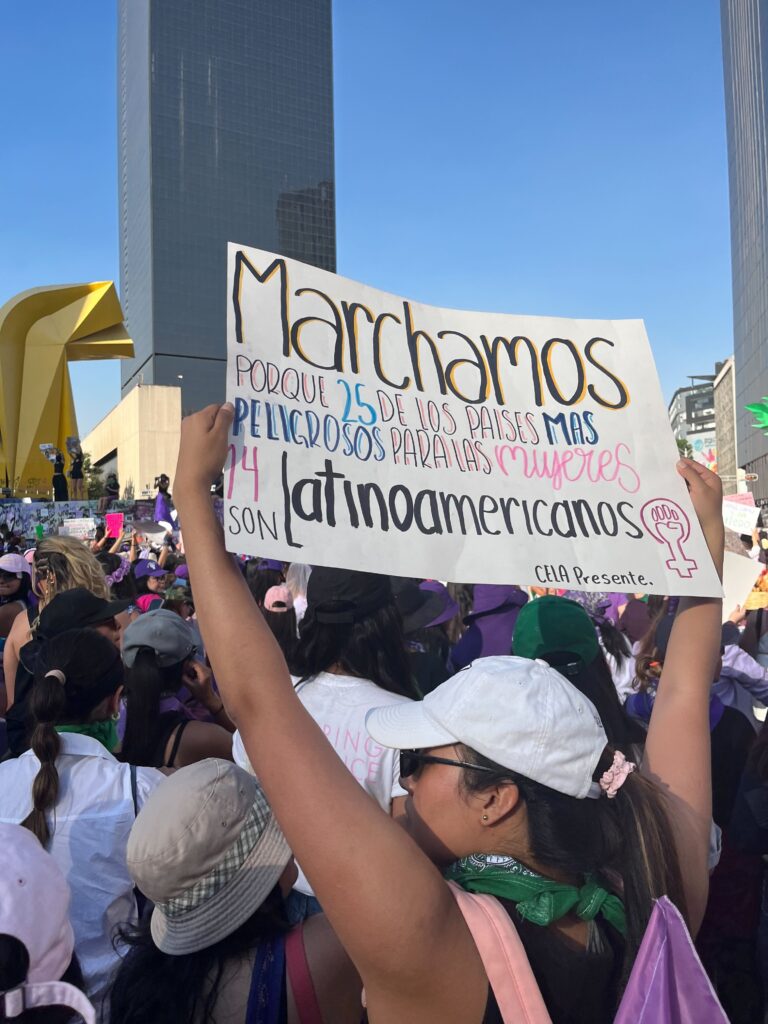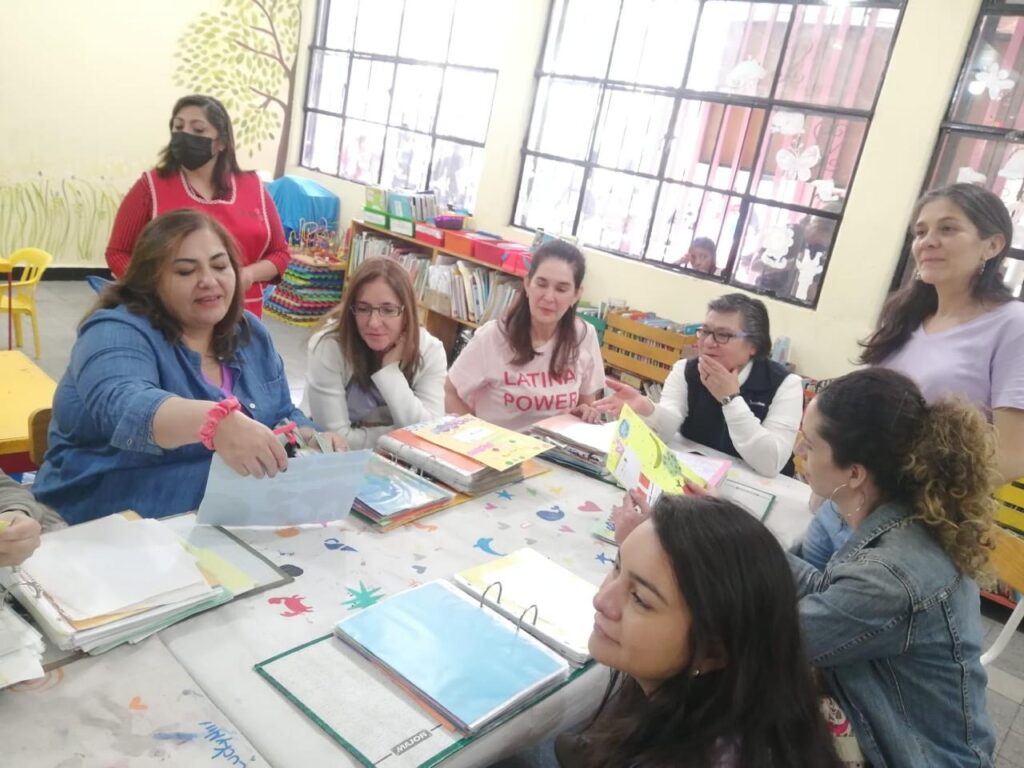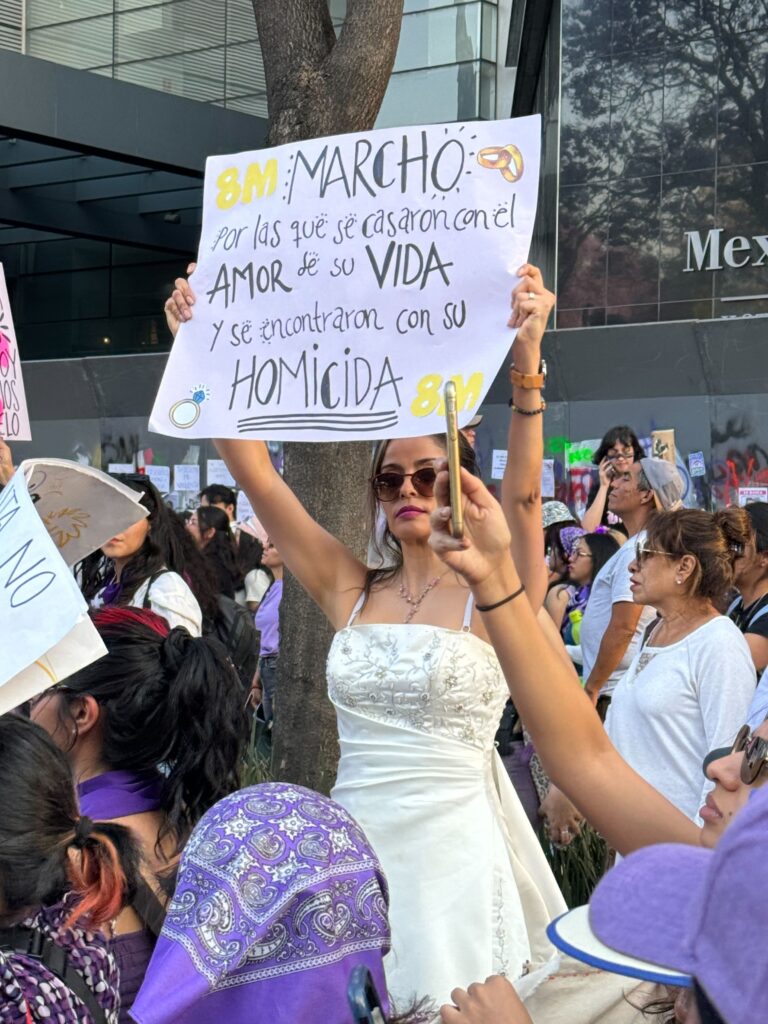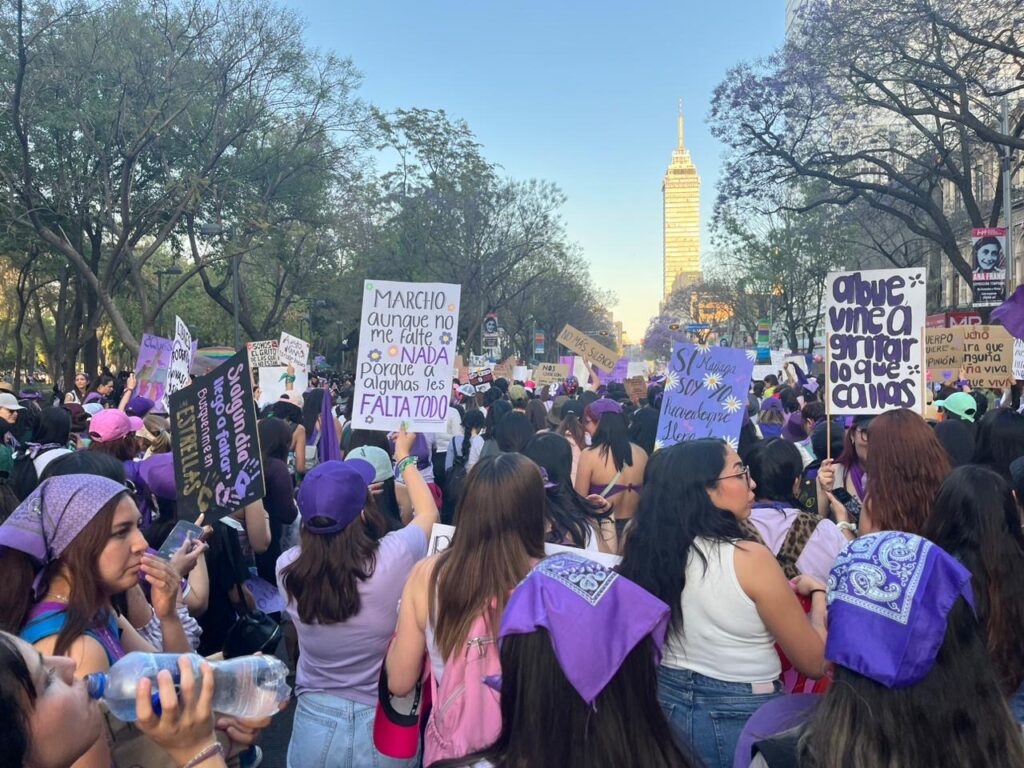Witnessing the Power of Collective Action on 8M
As I reflect on my recent visit to HIP’s office in Mexico, I am moved by the deep commitment and purpose that our collective corazón shared with me during my time there. March 8th is significant globally, but to be with my HIP colegas in the second-largest city in Latin America embraced by a sea of purple and chants calling for justice brought me to tears.
What I experienced was a glimpse of the power of collective action.

Before heading to the march, our team met with a few grantee partners, CAFEMIN (Casa de Acogida y Formación para Mujeres y Familias Migrantes) and Brigada Callejera Apoyo a la Mujer Elisa Martínez A.C. My colegas were intentional in shaping our day this way. They wanted me to experience 8M as a day with and for our community.
We started with CAFEMIN – a grantee partner of our Migration and Forced Displacement program. It is a shelter run by Josephine sisters that gives refuge to hundreds of migrant women and families and works to defend their human rights. The teenagers and children we saw playing made me think of my daughter and how I would do anything to keep her safe. It was comforting to see how comprehensive they were in providing access to legal aid, psychological counseling, education, social workers, and community integration all while creating a safe haven for those in need.

We then headed to Brigada Callejera, a grantee of our Gender Equity program. This nonprofit has been active for over 25 years working to support and protect the well-being of cis and trans women engaged in sex work. They provide resources for HIV prevention, address discrimination, and advocate for the prevention and end of human trafficking and the protection of trans women's lives due to the increase of transfeminicides in México.
The spirit of each gathering was inspiring – I saw the impact of HIP in our communities with my own eyes. Their resolve to support each other was a true matriarchal system that interconnected the strengths of community members to address the needs of the most vulnerable.

When we headed to the march, I started to notice the sea of purple, both of people and jacaranda trees, which are also purple, in bloom. The saturated color felt like a reflection of the energy and emotions of the march itself. As we immersed ourselves, vibrations were tinged with both hope and grief. It was as if the movement embraced us – swallowed into one voice that walks for justice.
It was both difficult and beautiful to witness an intergenerational movement led by so many young people and sustained by generations of women who have been silenced. This march has grown in reflection of the experiences and increase in violence.

Women, girls, and femmes of all ages and intersecting identities were present at the march. Some contingencies represented sex workers, farmworkers, working families, trans women, missing and murdered women, the anti-racist movement, the movement to call for a ceasefire in Palestine, and so many more. Those frequencies collided with chants of protection and promises of justice that spilled over into the deep unifying song, Canción Sin Miedo by Vivir Quintana.
Each voice added depth to our collective understanding – that our work is far from over.

In the end, the march is only the expression of that one day. But the work that women, organizations, and some institutions do is done every day.
The fight for gender equity demands that we reaffirm our commitment to solidarity with organizations at the heart of this movement. Philanthropy must catalyze change, empower grassroots organizations, and foster a more just and equitable future where women, girls, and femmes can live free from violence, discrimination, and inequality.
